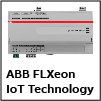August 2008![]() AutomatedBuildings.com
AutomatedBuildings.com
Babel Buster Network Gateways: Big Features. Small Price.
Control Solutions, Inc. - Minnesota
(Click Message to Learn More)
An Intelligently Green Building
The imagination of the building design team (along with the willingness to research and specify the technology and products involved in this integration) is the only limit to creating intelligently green buildings.
Paul Ehrlich & Ira Goldschmidt
Building Intelligence Group
L ong before BAS?s became the standard technology for commercial building control and even longer before LEED became the defacto standard for defining a ?Green? building the concept of an intelligent building was born. Of course, the ingredients to an intelligent building has changed over the years. Today the question is how much can the green initiative benefit from intelligent building technology? This issue was recently discussed during the June 25th Engineered System?s webinar ?Integration + Green = High Performance?. You can view an archived version of this webinar at http://w.on24.com/r.htm?e=110121&s=1&k=C621FCA8442E0B4AFA883FDE9DA5F4AA .
| |
| |
| |
| |
| |
| |
| |
| |
| |
| |
Load-Based HVAC Control ? The dynamic reset of air handler supply temperatures/pressures and central plant supply temperature based on the actual heating/cooling loads in the spaces (i.e., VAV box damper position, etc.).
Demand Controlled Ventilation ? The dynamic reset of outside air below that required by code based on the actual number of building occupants.
Demand Limiting ? On/off or reset control of HVAC or other electrical equipment to reduce the impact electrical demand (KW) costs.
By nearly any measure the above examples improve the greenness of a building. Whether they actually contribute to a building?s LEED certification is another matter (see the webinar information for more on this issue). This depends on the creativity of the A/E team?s approach to meeting the LEED credits.
A different and less obvious example is the use of a structured wiring system shared by both the building low-voltage controls (i.e., HVAC controls, lighting, etc.) and the building telephone, data, etc. systems. By combining what would have been multiple underutilized wiring systems into one system haven?t we achieved something that is the epitome of what a green building is supposed to do ? conserve resources (in this case copper)?
 On the other end of the building intelligence scale includes
concepts that involve a high degree of data integration ? not only between
low-voltage control systems but also with other systems that are outside of the
normal realm of building automation. These ?other? systems include those for
building management (i.e., CMMS, BIM, etc.) and the business enterprise (i.e.,
financial, a Microsoft Exchange Server, etc.). Some interesting examples of this
higher-level of intelligence include:
On the other end of the building intelligence scale includes
concepts that involve a high degree of data integration ? not only between
low-voltage control systems but also with other systems that are outside of the
normal realm of building automation. These ?other? systems include those for
building management (i.e., CMMS, BIM, etc.) and the business enterprise (i.e.,
financial, a Microsoft Exchange Server, etc.). Some interesting examples of this
higher-level of intelligence include:
-
Building automation alarms (or better still FDD?fault diagnostic and detection?software messages) initiating CMMS (computerized maintenance management software) work orders.
-
Demand response through an internet-connected utility meter, whereby changes in building control can automatically occur as energy prices change.
-
An occupant accessible web-site for controlling an occupants comfort level and/or extending HVAC system operating hours. The latter function might involve automatic XML communications with (or modification of a SQL database for) a financial system so that costs could be added to the department?s share of the building operating expenses or to a tenant?s lease invoice.
The above examples demonstrate a real opportunity to both improve occupant and/or building management productivity along with conserving energy (or electrical demand). These examples also show that the imagination of the building design team (along with the willingness to research and specify the technology and products involved in this integration) is the only limit to creating intelligently green buildings.
About the Authors
 Paul
and Ira first worked together on a series of ASHRAE projects including the
BACnet committee and Guideline 13 ? Specifying DDC Controls. The formation of
Building Intelligence Group provided them the ability to work together
professionally providing assistance to owners with the planning, design and
development of Intelligent Building Systems. Building Intelligence Group
provides services for clients worldwide including leading Universities,
Corporations, and Developers. More information can be found at www.buildingintelligencegroup.com
We also invite you to contact us
directly at Paul@buildingintelligencegroup.com
or ira@buildingintelligencegroup.com
Paul
and Ira first worked together on a series of ASHRAE projects including the
BACnet committee and Guideline 13 ? Specifying DDC Controls. The formation of
Building Intelligence Group provided them the ability to work together
professionally providing assistance to owners with the planning, design and
development of Intelligent Building Systems. Building Intelligence Group
provides services for clients worldwide including leading Universities,
Corporations, and Developers. More information can be found at www.buildingintelligencegroup.com
We also invite you to contact us
directly at Paul@buildingintelligencegroup.com
or ira@buildingintelligencegroup.com
[Home Page] [The Automator] [About] [ Subscribe ] [Contact Us]



